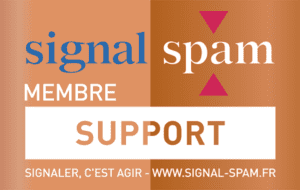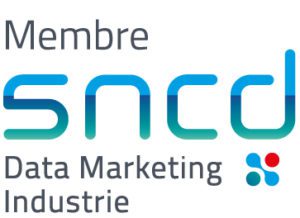Do customers really buy what you sell? Does your business inspire conversion? These questions provide a quick measure of your company’s success.

Email marketing programs are designed to develop a company’s business. Using e-mail to convert a prospect into a customer has therefore become an essential step in marketing.
However, the definition of a conversion is still vague. There are many reasons for this, including the use of messaging programs to achieve secondary objectives. Since the latter have been developed on the basis of each company’s own objectives, this creates a divergence of opinion.
To shed more light on the subject, we put these two simple questions to the experts:
- “WHAT IS A CONVERSION?”
- “IS CONVERSION VIA EMAIL MARKETING DIFFERENT FROM OTHER CONVERSIONS?”
They all had a fairly similar definition of conversion. But as they expanded on the subject, their explanations quickly became confusing. Everyone agreed that there are two types of conversion, but opinions differed as to what they were and what they were called. Among the answers, the experts mentioned :
- micro-conversions and macro-conversions
- email and website conversions
- direct and indirect conversions
- conversions and sales conversions.
A conversion can be many things. Quite simply, it is “the realization of a desired action”. There are two main types of conversion:
- micro-conversion (click-through rates)
- and macro-conversion (achievement of the final objective, such as a sale or registration).
Many merchants generally opt for the wrong conversion – micro-conversion – because it’s easier and the results are more tangible.
For example, if you send several people an email promising them a free beer and pizza, you’ll probably get a very high click-through rate. But when they get to your home page and discover that you only sell socks, be prepared for a high bounce rate. In fact, many companies have lost the trust of their customers because of mismatched images. That’s why home page optimization is an integral part of email marketing.
If, on the other hand, you send the right message with the same conversion objective in mind, the results will get better and better with every step.
Don’t get me wrong, evaluate micro-conversions first – they can bring you opportunities. But think long-term, and opt for macro-conversions. In other words, keep an eye on sales, not clicks.
A conversion is simply an action that takes place on your home page or any tab on your website. The purpose of the action in question is to lead prospects to achieve a desired result. You need to start by defining the conversion you’re looking for (a new subscriber, a new order…).
Conversions don’t take place in e-mails, but on the website. The conversion rate on the website is only part of the action. So you need to make sure that all parts balance out:
- Your audience
- Your subject: opening rate
- Message and offer quality: click-through rate
- Potential customers on your website: number of visitors
- Visitors who don’t like what they see and leave the site: bounce rate
- Visitors who complete the planned action: conversion rate.
You’ll always need to go through the phases of testing, refining and fine-tuning to get the best user experience and to be able to offer the best deals. Keep in mind that testing never ends. There will always be something to improve to give customers the experience they’re looking for. That’s how you stay ahead of the competition.
Advertisers often question the value of conversions if they don’t result in a sale. This can lead you to believe that a campaign without direct and immediate benefits is a failure.
However, conversions don’t always provide instant benefits. An email conversion can mainly be defined as a subscriber taking the path you’ve indicated in your message. If your email advertises an event, for example, a click to the registration page is progress, while a completed registration is a conversion. If you send out a monthly newsletter with links to your blog content, conversion can be measured by the number of posts read or the time your subscribers spend on your blog.
Some emails lend themselves to direct conversion: you promote a product and prospects buy. But there are also indirect conversions where your email triggers another interaction with your site or a product.
For example, you send an e-mail inviting your subscribers to download your annual report. Your subscriber opens it but does nothing. However, your email reminds him that there’s more content on your blog. He visits your blog and reads old articles. He discovers a promotion for a weekly newsletter that interests him and decides to subscribe. Is this a conversion due to the first e-mail? No, but the email was the catalyst that led the subscriber to old emails. So this is an indirect conversion.
An email conversion is simply when a desired action takes place as a result of an email sent to a customer. Many merchants, however, consider an email conversion when the email is the factor that prompted the customer to make a purchase or take some other action, such as registering for an online conference or a competition.
This point of view is rather limited, as email is much more than the final conversion event. There are many crucial points to take into account when bringing in money through a series of micro-conversions.
So, what is a micro-conversion? It’s the smallest action your customers take before they get to the goal you’ve set.
The ultimate goal of email is to sell a click, because email isn’t really where the final conversion event takes place. Unless you’re one of those innovative brands with enough experience to sell directly via email, without redirecting the customer to your website.
The next time you see an email campaign with several links, but representing low conversions, don’t blame the email… unless it promises something the site couldn’t deliver.
Generally speaking, conversion refers to any desired action that has actually been carried out by prospects or customers. This was the definition of conversion for pre-internet direct marketing.
A conversion doesn’t always involve money changing hands. A conversion can take the form of a form to fill in or a report to download. This is the case for large quantity purchases, ticket sales or a long sales cycle (business-to-business prospecting)… For some organizations, however, conversion rhymes with sale. In this case, conversion is defined as: conversion to sale.
Whether or not conversions involve immediate sales, it’s important to evaluate the evolution of these conversions on a monthly and quarterly basis. Measure the number of sales resulting from these conversions, and divide the number of sales by the number of conversions to obtain a percentage of conversions to sales.
But remember, these desired actions cannot be considered conversions, unless they are the result of an action initiated by the company.
The risk of conversion inflation
Our experts have made some interesting observations, and the distinctions they have drawn are very important. But at the same time, confusion can easily arise and conversion inflation can occur.
Email marketing programs may no longer be aligned with business goals and objectives. This can result in a “successful” program, but one that doesn’t contribute to the company’s evolution.
The best way to avoid vague objectives and measurements is to keep track of the campaign’s objectives. You’ll also need to translate these results into company objectives and metrics. Separate your email marketing metrics from your sales metrics, and you’ll see that your email campaign will be a success in the eyes of your company’s management. Read our article on analyzing email marketing statistics.






